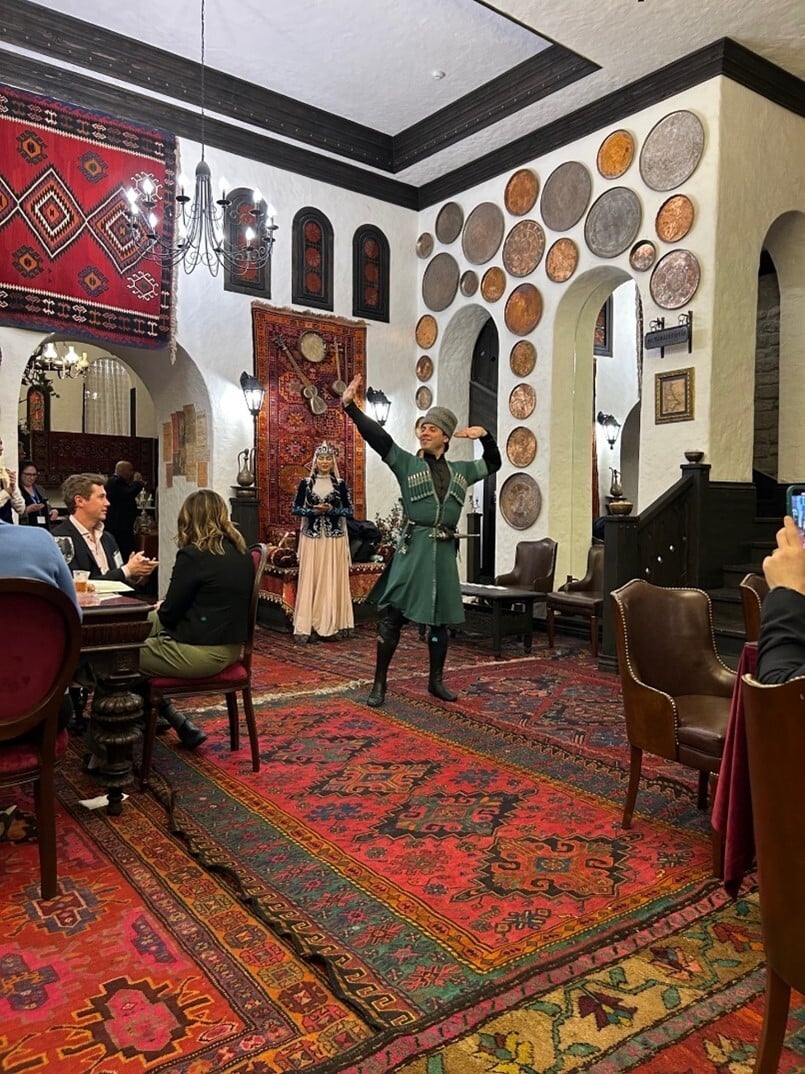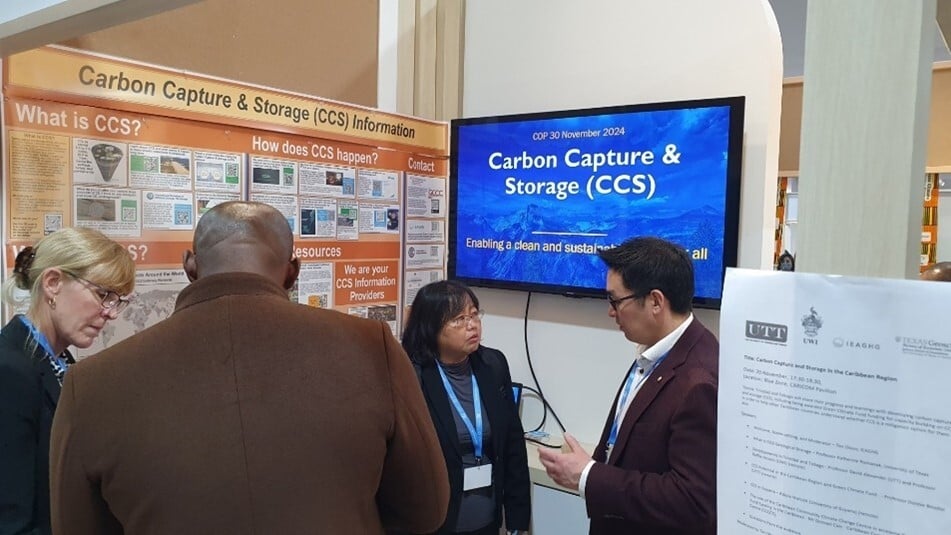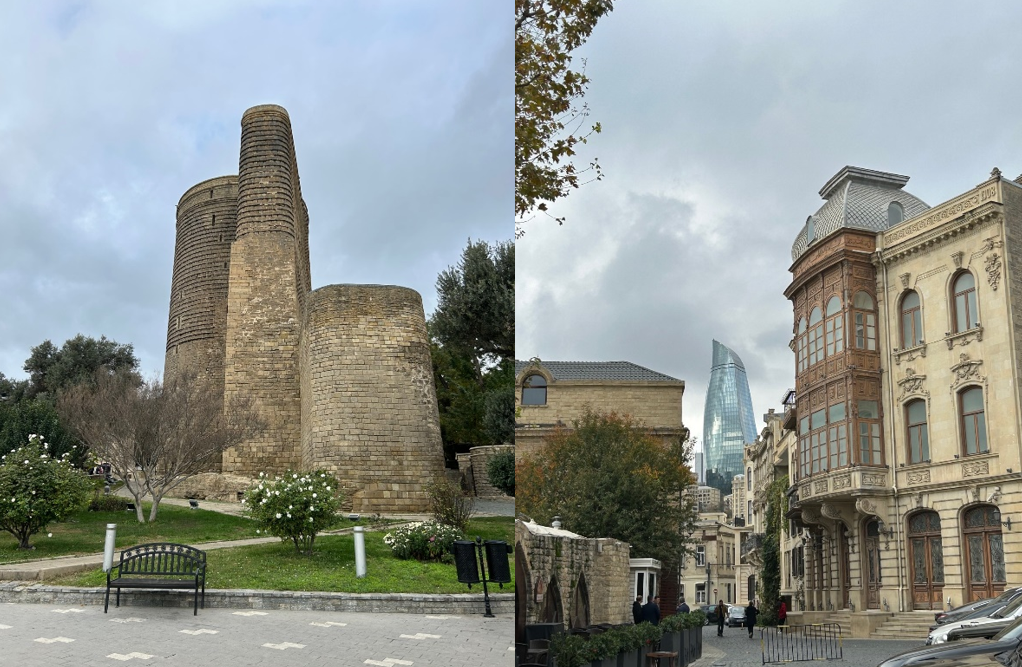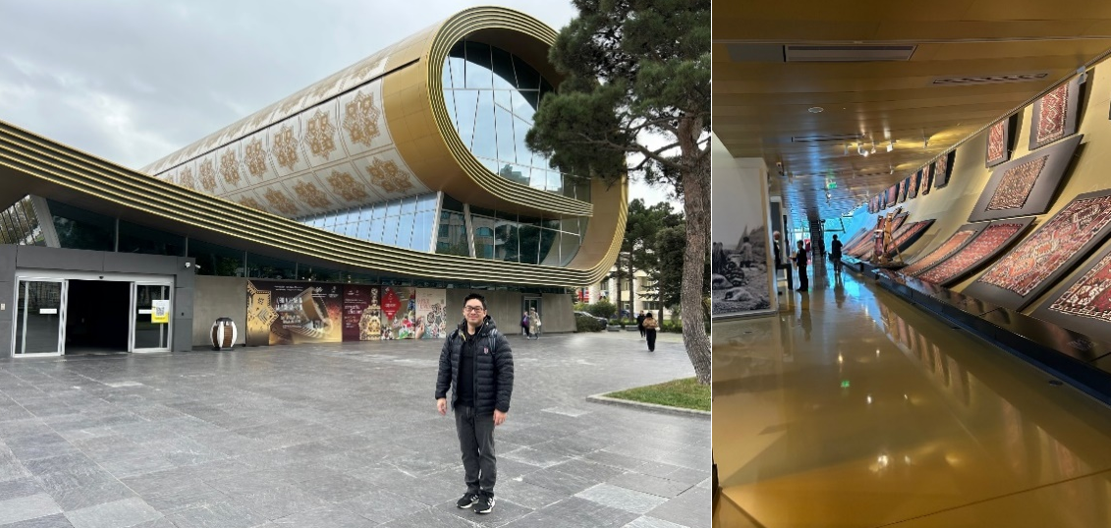COP29 wasn’t just about advancing carbon capture and storage (CCS) solutions—it was also an opportunity to explore the vibrant city of Baku, Azerbaijan. Between impactful panels, government engagements, and strategic networking, the city’s blend of ancient history and modern innovation provided a fascinating backdrop for the Knowledge Centre’s efforts to position Canada as a global CCUS leader.

A Fantastic Arrival (and First Meal)
I arrived partway through the first week of COP, with my first event being a dinner hosted by the Alberta Government and Emissions Reduction Alberta. It was a great opportunity to connect with an international delegation over insightful conversations and traditional food. A highlight of the night was the Azerbaijani dancers that shared their traditional dance while pulling in some “volunteers” to join them.

Each day, I rushed off to the ICC’s daily BINGO (business and industry NGO’s) briefings, as recommend by Tim Dixon at IEAGHG. It was a great way to keep informed about what was going on in negotiations and the other key events at COP. It is also where I was able to meet more people in the carbon management community, including world renowned CCS subsurface experts like Tim and Katherine Romanuk from the University of Texas. Their guidance throughout my time in Baku ensured that I used my time effectively.
The first briefing I attended was none other than Alberta’s Minster of Environment and Protected Areas, Rebecca Schulz, who discussed Alberta’s leadership in carbon management. It was also my first encounter with the headsets (which I love to hate) and the start to the ongoing joke of “It’s now time for the silent disco.”

It was great to see the strong Canadian representation sharing our progress in carbon capture and methane reductions. This theme continued in thoughtful panels with members of the Alberta Government, Quebec Government, Emissions Reduction Alberta, Alberta Innovates, Clean Resources Innovation Network, Petroleum Technology Alliance Canada, Tourmaline, Pathways Alliance, Deep Sky and the University of Calgary, among others.
The growing momentum around CCS as a pathway to achieving global climate goals demonstrates the importance of accelerating projects to reach Final Investment Decision (FID) stood out. The Getting to Final Investment Decision Report provides a roadmap to navigate the complexities of CCS project development. It tackles the technical, financial, and policy challenges that often delay progress, offering practical strategies to streamline the journey from concept to execution. With nations adding to their environmental commitments, this report serves as a resource to enable stakeholders to learn from what some of the crucial steps are to achieving FID.
Participating in Global CCS Conversations
I learned about the journey of bringing carbon capture into the conversation. It has taken effort by many people over multiple years to discuss the solutions CCS can provide, helping to remove CO2 from the atmosphere and store it beneath the surface. I believe our positive discussions have advanced the conversation, enabling more countries and organizations to evaluate commercially available solutions for their hard-to-abate industrial sectors.
On November 19th, I participated in the UNCCC side event: “Is there any Climate Finance for Carbon Capture and Storage, Especially in Emerging Economies?” It was an opportunity to highlight Canada’s leadership in CCUS and discuss the importance of sharing lessons learned with emerging economies to help further accelerate their speed of implementation.

Hosted in collaboration with the CCSA, University of Texas, and IEAGHG, we had a booth providing information on the basics of CCS. The booth became a hub for delegates from around the world looking to address misconceptions about CO2 storage and the extensive work being done in this area.

The Carbon Management Challenge (CMC) was a highlight for me, especially with their first Ministerial meeting. I was included through the secretariat (provided GCCSI), where 22 countries are aiming to scale both CCS and carbon dioxide removals to capture 1 billion tonnes of CO2. By focusing on financing models, durable storage, and private-sector leadership, the CMC is fostering global collaboration to tackle carbon emissions from their sources.

Exploring the Best of Baku
While the work was energizing, the chance to discover Baku’s charm added an exciting dimension to the trip on the Sunday where COP29 had a designated day off.
Exploring Baku offers a unique journey through time and culture. The Old City, a UNESCO World Heritage Site, invites visitors to wander its cobbled streets, where ancient walls enclose landmarks like the Maiden Tower while being able to see all the new construction that shows the modernization of the city.

It would have been very hard to pass up the unique Carpet Museum (the best one I’ve ever been to) designed to resemble a rolled-up carpet, showcasing the artistry and heritage of Azerbaijani craftsmanship.

Baku was a beautiful city and really shows as day turns to night. The Flame Towers dominate the skyline, symbolizing the region’s historical connection to fire worship.

Takeaways
For me and the Knowledge Centre, going to my first COP was a rewarding experience—not just in driving CCS progress, but also in building cultural connections and gaining a global perspective on the carbon management community.
Baku provided a memorable backdrop for COP29, seamlessly blending impactful discussions on global climate solutions with opportunities to experience a unique cultural history. The Knowledge Centre’s work at the event reinforced Canada’s leadership in CCS while fostering connections with countries and industries worldwide. As conversations continue in the months ahead, the lessons learned, and relationships built in Baku will help shape the path toward achieving meaningful progress in the carbon capture and storage mission.